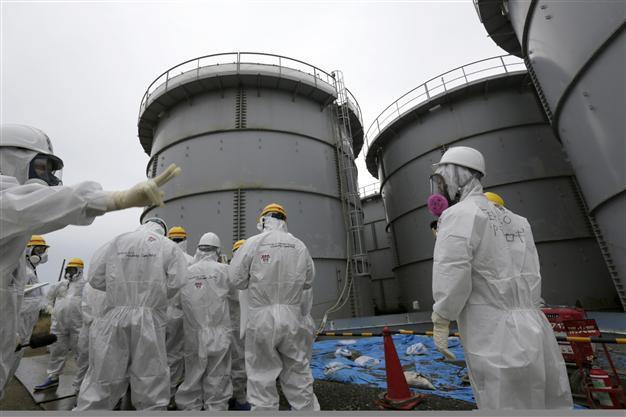Japan court blocks restarting of two nuclear reactors
TOKYO - Agence France-Presse

AP Photo
A Japanese court on April 14 issued a landmark injunction against the restarting of two atomic reactors, after the country's nuclear watchdog had given the green light to switch them back on.The district court in the central prefecture of Fukui made the temporary order in response to a bid by local residents to halt the restart of the No. 3 and No. 4 reactors at the Takahama nuclear power plant, a court official said.
The Nuclear Regulation Authority (NRA) last December approved the restarting of the reactors, saying they met tougher safety standards introduced after Japan's tsunami-sparked nuclear disaster at Fukushima in 2011.
But "the safety of the reactors hasn't been secured", the court ruled, saying the watchdog's new standards were "lacking rationality", according to public broadcaster NHK.
Plant operator Kansai Electric Power described the injunction as "extremely regrettable and utterly unacceptable" and said it would appeal against the decision.
A lawyer representing the plaintiffs called the ruling a "perfect victory".
"This is the best decision that we could have expected," he told supporters outside the courthouse.
Two other reactors at Takahama also remain offline.
A separate court ruling on the restart of two other reactors in southern Japan is expected later this month.
Pro-nuclear Prime Minister Shinzo Abe has backed an industry push to return to nuclear -- which once supplied more than one quarter of Japan's electricity -- as a plunging yen sent the country's energy import bill soaring.
But Japan has seen a groundswell of public opposition to the technology since Fukushima, where reactors went into meltdown after a tsunami swamped their cooling systems -- setting off the worst atomic disaster since Chernobyl in 1986.
Japan's entire stable of nuclear power stations was gradually switched off following the disaster, while tens of thousands of people were evacuated due to concerns about radiation exposure.
Many are still unable to return to their homes and scientists have warned that some areas around the plant may remain uninhabitable for decades or more.
















